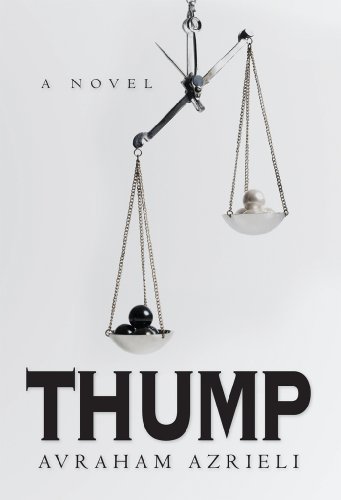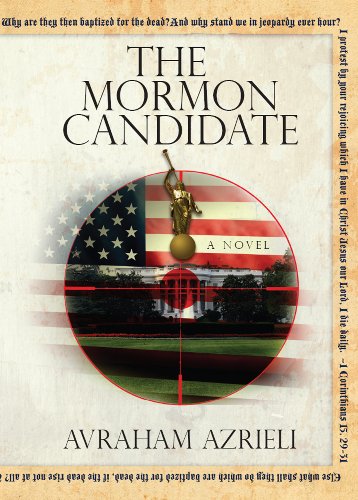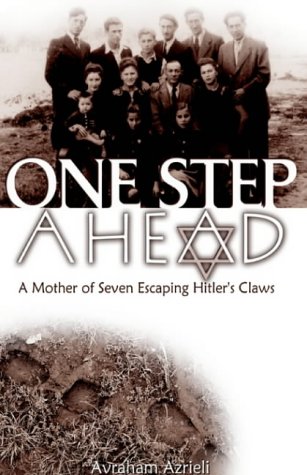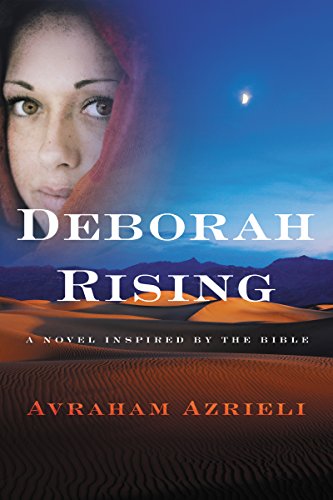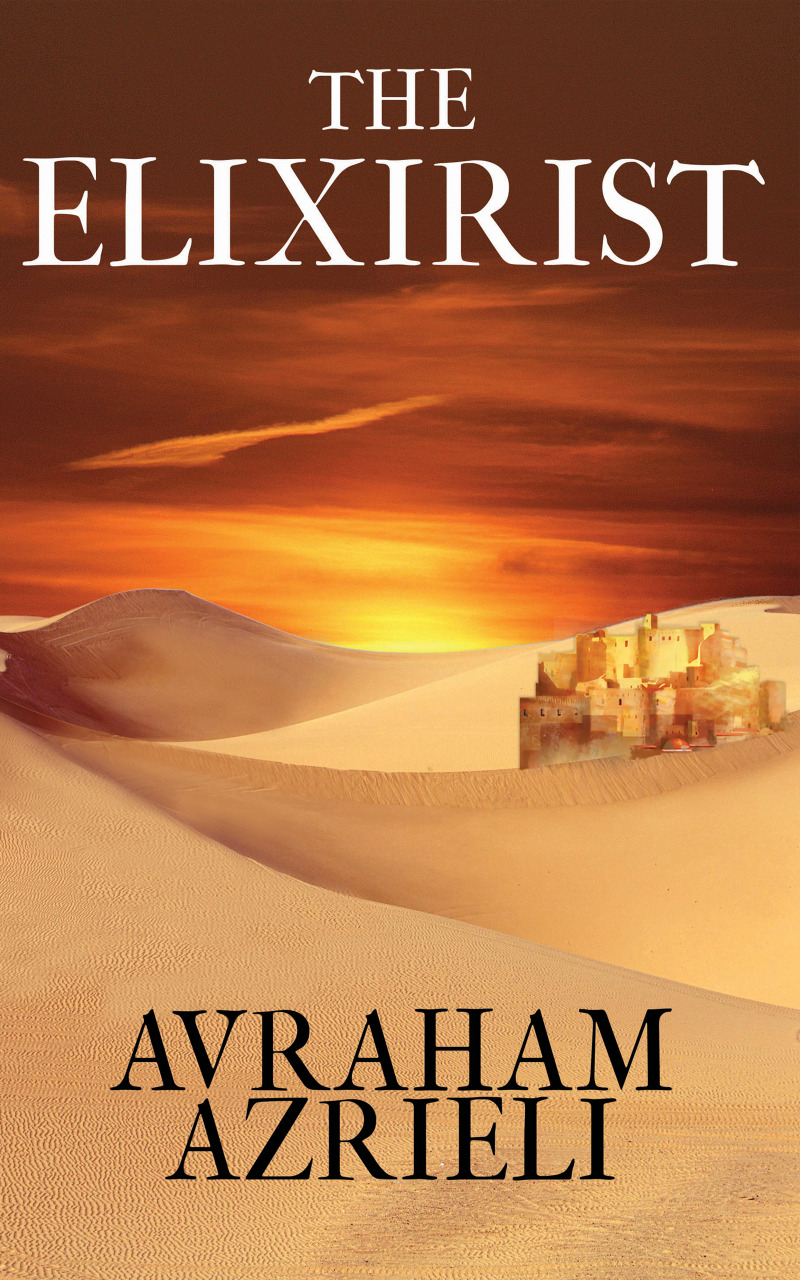ISRAEL, REVISITED by Avraham Azrieli
Posted on Nov 2, 2016 in Articles | Comments Off on ISRAEL, REVISITED by Avraham AzrieliISRAEL, REVISITED
by Avraham Azrieli
(Originally published in the Jewish News of Greater Phoenix, July 2013)
A recent visit to Israel rekindled my affection for our Jewish State, while fueling my dread of its demise.
Despite ominous warnings from our kids’ nanny and the State Department, we left for Israel with our three youngsters to attend my niece’s Orthodox wedding, which was unlike any nuptial celebration we have seen before. The groom’s friends, in white shirts, slacks and sandals, handguns stuffed in their belts, danced tirelessly to modern interpretations of old Hassidic tunes. Faces red, long dresses sodden with sweat, the bride’s girlfriends danced behind a see-through partition until their ankles showed. The groom himself had hired a tutor to help him rehearse the complicated steps of an old Sicilian piece, which he preformed without tripping before his betrothed. The parents’ friends, hair graying under knitted yarmulkes and colorful headdresses, sat around loaded tables with their abundant offspring and pointed out possible matches for their own brides-to-be, until the groom’s father pulled them into the ever-expanding rings of dancers.
I had left Israel fourteen years ago to study in New York, planning to return and practice law. Like other Israelis, I stayed, intoxicated by the incredible lightness of good life in America—all you need is lots of hard work. The perspective of passing years and periodic pilgrimages has fostered a measure of objectivity. The phrase, “There is no place like home,” attains a fresh meaning when you pay infrequent visits to your terrorized homeland.
We landed at Ben Gurion airport an hour before sundown on the eve of Shavuot. A young taxi driver put out his cigarette and quickly packed us into a tidy white van. My knees soon began to hurt as they repeatedly collided every time our driver threaded the van between other cars on the highway to Jerusalem. Road #1 was filled to capacity, cars breaking the speed limit in both directions, drivers tailgating, fencing each other with high beams and bemoaning horns, steering single handedly, while the other hand is used for talking. Our driver dialed his wife on the cell phone, while passing a small Fiat on the left shoulder, and reminded her to bring his white shirt to his parents’ house for the holiday dinner. He assured her he would be there soon; I believed him, and buckled up.
As our jetlag subsided, we left on an excursion to my childhood hometown, Haifa. Descending the mountains west of Jerusalem, I noticed large signs for Road #6 – the first-ever Israeli toll road. I called one of my brother-in-law’s three cell phones, and he said, “The Cross Israel Highway is not safe.” Later that night I learned that, while we took the coastal road from Tel Aviv, a grandfather and his six-year-old granddaughter were fatally shot by Arabs on the new toll road.
I met a friend for a late-night dessert at a Jerusalem cafe. A security guard frisked us and probed our shoes with a metal detector. The place was busy, giving us a warm feeling of camaraderie with the other targets. We sat outside, a low wall separating us from the sidewalk. I eyeballed every pedestrian male whose love handles could hide a more imminent health risk to him and others. The tab included a security charge, which I gladly paid.
After a few days, my wife set aside her vow to avoid public places and went shopping for Israeli sandals with my sister. They returned with three pairs—red, black, and brown, which my wife modeled for us in my mother’s living room/dining room/guestroom combo. We marveled at the fortunate events that coincided to produce such a steal on designer sandals. A TV newsflash interrupted us. A suicide bomber dressed as an ultra-Orthodox Jew had triggered his belt on a bus at a Jaffa Street stop, along the path my wife and sister had walked an hour earlier. Sixteen killed. One hundred wounded.
Israelis’ fierce zest for life reminded me of New York City. While not as many people speak Hebrew in New York City as in Israel, they exhibit similar driving habits and comparable scars from Islamic terrorism. Both are populated by disproportionate numbers of writers, painters, musicians, idealists, and regular dreamers, all sharing sidewalks with corporate leaders, government big wigs, and lots of lawyers, all infused with frantic energy, driven to change the world no later than yesterday. In Israel, as in New York City, people care.
Comparing Israel of today with my recollection of two, six, eight and ten years ago, I am saddened by its decline. Three years of post-Oslo Palestinian terrorism have sapped the famous sabra optimism. While the American economy is hurting, Israel is in the midst of a great depression. Unemployment has surpassed all historic records. Government coffers, as Treasury Minister Bibi Netanyahu hoarsely recites, are empty, resulting in elimination of essential health, education, and social services. Dwindling tax revenues are consumed by an indispensable defense and security Octopus. Foreign tourism is all but gone. Foreign investment is on the ice, while emigration is on the rise, causing the U.S. embassy in Tel Aviv to require a personal interview in English with every visa applicant. Secular Zionism has followed the socialist pioneers into nursing homes, and the all-powerful labor union, the Histadrut, unleashes destructive general strikes to resuscitate an octogenarian-led Labor party, while the ruling Likud searches for its lost way. An old Israeli industrialist, whose companies had (until recently) manufactured elite fashion for worldwide consumption for half a century, told me: “Arafat has won.”
Talking politics was once a favorite Israeli pastime. But these days, Israelis don’t want to talk politics. When you ask, “What will happen?” most Israelis say, “Worse.” No one bothers to speculate about the future. Fatalism is safer, which explains why people still crowd buses and go browsing in the malls. Many Israelis have stopped watching the news, shutting their eyes to more scenes of the same horrors. President Bush’s Road Map ignites mere indifference. Since Arafat had declined Barak’s Camp David offer of a Palestinian state in all of the Territories, Israelis have grown disillusioned about the Arabs’ ultimate goal, giving more credence to the road maps that hang in every Arab school in the Middle East, which do not even show Israel. My mother, born in Palestine in 1934, said: “The Muslims are just like the Nazis. Hitler also started by killing the Jews, and when no one stopped him, he proceeded to destroy the world. The Goyim are so naïve.”
But a quiet transformation is changing Israeli society. Suffering has caused many to embrace faith. Religiousness in Israel is fashioned by covering one’s head. By this measure, Israel is more religious. Men opt to become modern Orthodox, fashioning knitted caps (larger circumference indicating stricter observance). Others skip directly to ultra-Orthodox ranks, adorned with black yarmulkes and blacker hats. Women have their choice of flowered headdresses, shapely ladies’ hats, or deceptively realistic wigs. Orthodox organizations, which feed on government subsidies, offer free daycare, schools, and healthcare, as well as financial and spiritual support in difficult times. Considering the peace of mind that comes with knowing that fate is prescribed from above, it’s no wonder many have turned to reliance on the Almighty.
Orthodox families typically have many children, who themselves marry young and multiply. Their eyes are bright with hope that has vanished from secular outlooks. Teenage girls volunteer for two years of national service, as teachers in poor communities, caregivers for the elderly, nurses in hospitals, or organizers in youth clubs. Religious boys take pride in military service, and have become a majority in elite units. A religious general was recently appointed to a front-line command, breaking a glass ceiling that had existed since Israel was born. In the navy, air force, and army, Orthodox recruits distinguish themselves with unquestioning patriotism, high energy, and courage in battle. And when their military or national service is complete, religious couples dedicate themselves to social causes and pioneer new communities. While the anti-religious party, Shinui, grew dramatically in the last elections and obtained powerful government ministries in a coalition deal with Sharon, many dismiss it as the last flicker of life for a secular Israel, a temporary bump in the unstoppable rise of religious power in Israeli politics. “Who else,” the Orthodox ask, “is still a Zionist?”
Whatever your denominational convictions are, you cannot help but respect the enthusiastic Zionist fever that typifies the Orthodox sector in Israel and, some say, fuels its growth. And, while its spiritual leaders occasionally issue Iranian-style rulings, its political leaders preach tolerance. A new – and first – Orthodox mayor of Jerusalem declared on his first day in office that City Hall would maintain its support of the Gay Pride Parade in Jerusalem and would not interfere with restaurants and clubs that open on Friday nights. “We must live together in tolerance,” he declared. A person lives as he believes.”
The mayor’s conciliatory tone, however, is an island in a stormy sea of factional strife. The combative tradition of the Israeli Knesset, which includes a bomb thrown by a young man who, years later, became its Speaker, has recently been one-upped by wide spread voting fraud. Attorney for one beleaguered Knesset Member, who had pressed the voting buttons for absentee members during crucial votes, claimed that his client did so because “Everybody else was doing it.” The same week, two brothers found themselves on opposite sides when the IDF fought with civilian settlers in an attempt to vacate an illegal post in the West Bank.
Many Israelis believe settlements should be removed to make way for a Palestinian State in the Territories. But a growing number of religious Israelis believe that God had given Judea and Samaria to His Chosen People, and “What God gave, only God can take away.” They complain bitterly that the term “West Bank” falsely connotes a narrow strip along the Jordan River, while in reality Judea and Samaria extend 40 miles west into Israel to the 1967 Green Line, which is less than 10-miles from Mediterranean coastline. A quick look at the map confirms their frustration, as the West Bank indeed occupies most of central Israel, leaving it with a sandy corridor connecting the Galilee in the north with the Negev Desert in the south.
We drove to a post-wedding “Seven Blessings” dinner at the settlement of Yakir, expecting a narrow road connecting little settlements. Instead, we found ourselves on a wide highway heading east from Kfar Saba. Well paved and brightly lit, the highway passed by large clusters of homes, industrial parks and retail outlets. The “settlement” of Ariel, for example, has become a city with its own university. Other settlements in the West Bank, such as Efrat and Maaleh Adomin, are close behind Ariel, with tens of thousands of families living vibrantly on the land of their ancestors. In practical terms, uprooting the city of Ariel and relocating it to a place within the Green Line to make way for a Palestinian State, is akin to pulling out Tucson and relocating it to Maricopa County to make way for an American Indian reservation.
Many of the settlers have put in deep-roots. The young couples, who pitched tents atop barren hills a generation ago, have built large homes, grew gardens, and raised kids who have already started their own families next door. The sheer quantity of middle-class families in those communities makes any talk of wholesale removal a pipe dream. No wonder the Arab Street has supported Arafat in foregoing the Camp David deal for a more final solution to the Zionist Entity.
We spent hours at Yakir with extended family and friends, celebrating the Seven Blessings for the newlyweds. We left after midnight and drove back toward the Green Line in a small Renault that my brother-in-law had borrowed from a friend. The car was armored with inch-thick windows and steel plates. Its little engine was ill equipped to propel more than a thin-skinned car. I had to shift gears rapidly to keep momentum on the incline. My American kids, unfamiliar with manual transmission, were intrigued with their daddy mixing something with a stick that protruded from the floor of the rattling car. We took a shortcut through several small towns within the Green Line near Petah Tikvah. Every few minutes, elderly volunteers with single-load, WWII Czech rifles and Civil Guard armbands stopped us in makeshift roadblocks to verify that we were not Palestinian terrorists. They shown powerful flashlights into the car, making my kids giggle.
Last morning in Israel. I got up with the sun and drove east from Jerusalem, descending into the scorching Judea desert. I stopped at seven security checkpoints. Reservists in their 30’s and 40’s, in full metal jacket, machine guns in the ready, searched my trunk for explosive belts and suggested it was time to get the car washed. The tourist stops along the western shore of the Dead Sea were deserted. At Masada, a state-of-the-art visitor center offered refreshments (I tried a glass of date juice at $5), artful knick knacks, and a video clip starring Peter O’Tool as the Roman general in Hollywood’s version of the ancient events.
A new cable car whisked me and a small group of Japanese tourists to the mountaintop. The Japanese’s joyous mood was at odds with the solemn silence of the ruins. The brochure provided by the Israel Antiquities Authorities told the story of King Herod’s paranoid excesses, building a self-contained fort that could support ten thousand men for two years on top of a mountain in the middle of uninhabitable desert. Huge stocks of food and water, cultivable dirt brought from fertile parts of the kingdom, weapon tool-shops, pigeon farm, and a cliff-hanging, 3-level palace offering northern views of the desert and the single road that a hostile army may take from Jerusalem.
Herod never needed to hole up in his palatial shelter. But a century later, during the last year of the Jewish rebellion against the Romans, Masada became the last stronghold of Jewish rebels and their families. Thus, Herod’s palatial bedrooms turned into communal sleeping quarters for aesthetic Jewish patriots. I looked at the earthen ramp the Romans spent a year building, and the gap in the outside wall, where the Romans finally broke in, finding that a mass suicide had deprived them of enslaving the heroes of Masada. I stood in the “lottery room” where the rebels’ leader Elazar ben Yair drew small pieces of clay with names to select the ten men who would slaughter all of the others, and then each other. I couldn’t help but think whether, 2000 years later, Jewish sovereignty over this parched land is again writing its requiem.
Driving back to Jerusalem, I saw CNN’s Wolf Blitzer standing in a field by a reflective umbrella, talking to a camera, his back against the arid slopes. I made a mental note to watch the news. Something bad must have happened. Or, maybe, he was just charting a new road map.
The Jewish People have survived several millennia. We are determined to stick around for several more, to see the year 10,000 and the Dow Jones at 100,000. But the history of Jewish sovereignty in the land of Israel has a sketchy past. Jewish kingdoms have existed and fallen, splitting into rival entities, cutting deals against each other with sworn enemies, and repeatedly crumbling under the weight of internal feuds. The current attempt at Jewish statehood in Israel is 55 years old. Its youthful promise has dimmed. Its middle-age is agonizing. What’s next?
236799_1

